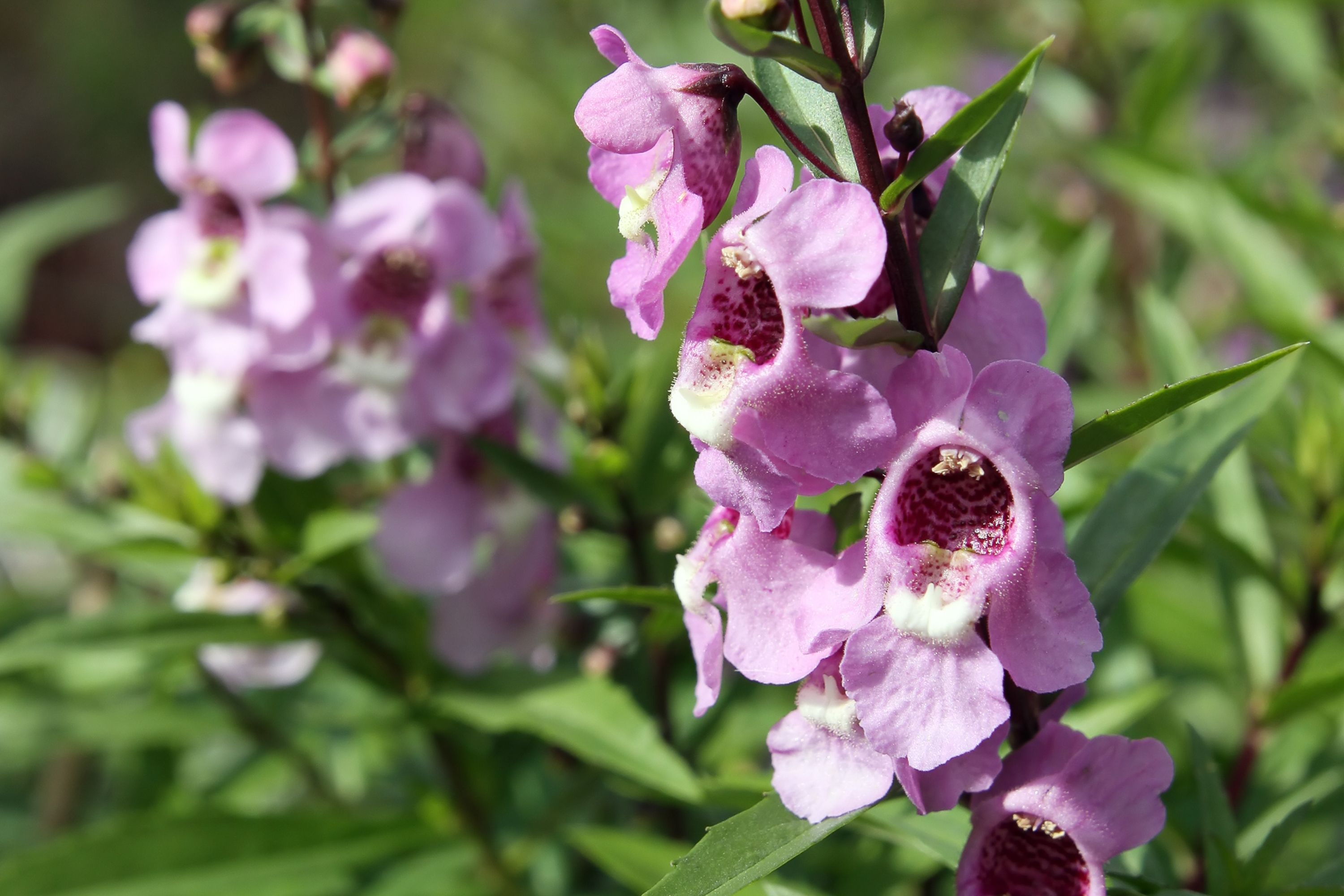Narrowleaf Angelon
(Angelonia angustifolia)

Description
Angelonia angustifolia is a species of Magnoliopsida described by George Bentham. Angelonia angustifolia belongs to the genus Angelonia, and the family Plantaginaceae. Angelica is a genus of about 60 species of tall biennial and perennial herbs in the family Apiaceae, native to temperate and subarctic regions of the Northern Hemisphere, reaching as far north as Iceland, Lapland and Greenland. They grow to 1-3 m (3 ft 3 in – 9 ft 10 in) tall, with large bipinnate leaves and large compound umbels of white or greenish-white flowers. Found mainly in China, its main use was for medicine. It shows variations in fruit anatomy, leaf morphology and subterranean structures. The genes are extremely polymorphic. Some species can be found in purple moor and rush pastures. Angelica species grow to 1-3 m (3 ft 3 in – 9 ft 10 in) tall, with large bipinnate leaves and large compound umbels of white or greenish-white flowers. Their large, sparkling, starburst flowers are pollinated by a great variety of insects (the generalist pollination syndrome), the floral scents are species-specific, and even specific to particular subspecies. The active ingredients of angelica are found in the roots and rhizomes and contains furocoumarins in its tissues, which make the skin sensitive to light. Some species are grown as flavouring agents or for their medicinal properties. The most notable of these is garden angelica (A. archangelica), which is commonly known simply as angelica. Natives of Lapland use the fleshy roots as food and the stalks as medicine. Crystallized strips of young angelica stems and midribs are green in colour and are sold as decorative and flavoursome cake decoration material, but may also be enjoyed on their own. The roots and seeds are commonly used to flavour gin. Its presence accounts for the distinct flavour of many liqueurs, such as Chartreuse. Among the Sami people of Lapland, the plant is used to make a traditional musical instrument the fadno. Seacoast angelica (A. lucida) has been eaten as a wild version of celery. In parts of Japan, especially the Izu Islands, the shoots and leaves of ashitaba (A. keiskei) are eaten as tempura, particularly in the spring. A. sylvestris and some other species are eaten by the larvae of some Lepidoptera species, including bordered pug, grey pug, lime-speck pug and the V-pug. A. dawsonii was used by several first nations in North America for ritual purposes.
Taxonomic tree:







